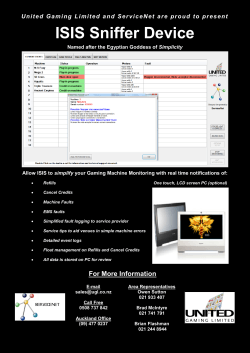
presentation - Committee on Publication Ethics: COPE
Altmetrics and impact Euan Adie Altmetric.com COPE, 17th April 2015 Getting credit where credit is due Altmetrics and impact Euan Adie Altmetric.com COPE, 17th April 2015 This talk • Why are altmetrics of interest to authors & institutions? • How are they used • Things we’ve learned • How are they abused Several different tools available You say tomato… But there is another driver Bad news for researchers? • You’re under pressure to justify – Yourself – Your research • Both internally and externally Good news for researchers? Funders and institutions are increasingly looking for or considering other types of: • Impact • Research output • Contribution The Evaluation Gap http://citationculture.wordpress.com/ Altmetrics Take a broader view of impact to help give credit where credit is due Example: social & mainstream media Blogs, reviews, comments Including Faculty of 1000, PubPeer, MathOverflow and the world’s largest curated index of academic blogs. Newspapers & magazines International titles, both mainstream and niche. Social media Example: policy documents World Health Organization (WHO) “WHO policy on collaborative TB/HIV activities: guidelines for national programmes and other stakeholders” Intergovernmental Panel on Climate Change (IPCC) “Managing the Risks of Extreme Events and Disasters to Advance Climate Change Adaptation” National Institute for Health and Care Excellence (NICE) “Delivering Accident Prevention at local level in the new public health system: Road safety policy and links to wider objectives” Example: popular non-fiction Gulp “’America’s funniest science writer’ (Washington Post) takes us down the hatch on an unforgettable tour.” The Black Swan “Since being published in 2007, as of February 2011 has sold close to 3 million copies. It spent 36 weeks on the New York Times Bestseller list list; 17 as hardcover and 19 weeks as paperback. It was published in 32 languages.” Thinking Fast and Slow “The basis for his Nobel prize, Kahneman developed prospect theory to account for experimental errors he noticed in Daniel Bernoulli's traditional utility theory.” How people use altmetrics data • To gauge the overall popularly of the article • 87% of respondents strongly agreed or agreed • To discover and network with researchers who are interested in the same area of their work • 77% strongly agreed or agreed • To understands a paper’s influence on the scientific community • 66% strongly agreed or agreed • To determine what journal to submit their next paper to • 60% of respondents strongly agreed or agreed • To determine areas of research to explore • Only 37% of respondents strongly agreed or agreed Browsing by author Browsing by department Some things we’ve learned People are very keen to relate it to citations! Scholarly altmetrics correlate with citations. Public engagement / policy & practice altmetrics don’t. How people (ab)use altmetrics data "The more any quantitative social indicator (or even some qualitative indicator) is used for social decisionmaking […] the more apt it will be to distort and corrupt the social processes it is intended to monitor.” Donald Campbell, 1976 Quantifying attention Altmetric score Why score at all? To allow ranking Gaming the system Gaming? • Alice asks her friends to retweet her. Gaming? • Bob likes Alice’s paper. He shares it with all his friends and asks them to retweet him. Gaming? • Alice pays $5 for 100 retweets Four types of suspicious attention What can be done? • Make underlying data available, visible • Only track sources that can be audited – Some interesting sources fail this test e.g. downloads and private Facebook activity • Automatically flag up suspicious activity, then manually curate • Have a standard process in place to deal with gamed articles, notify the journal Thanks for listening! euan@altmetric.com @altmetric
© Copyright 2025









